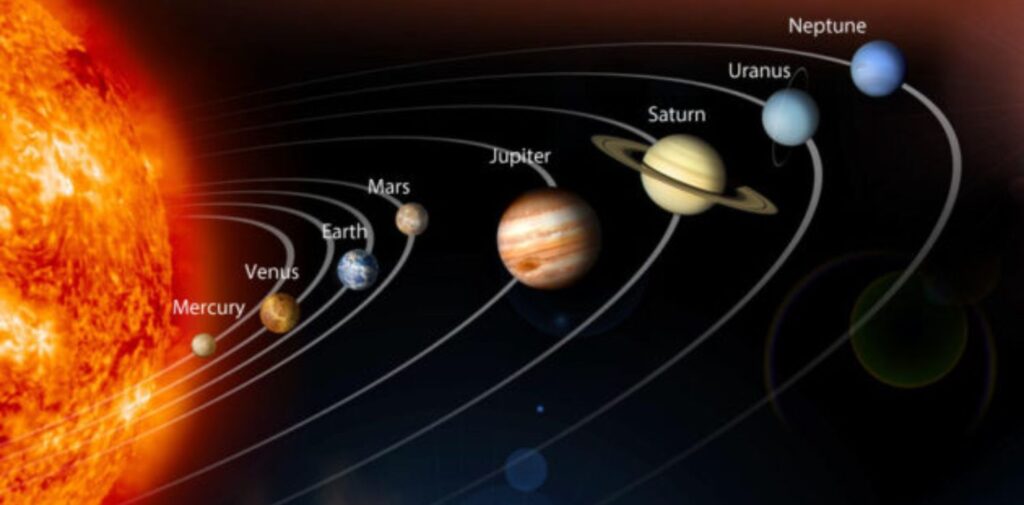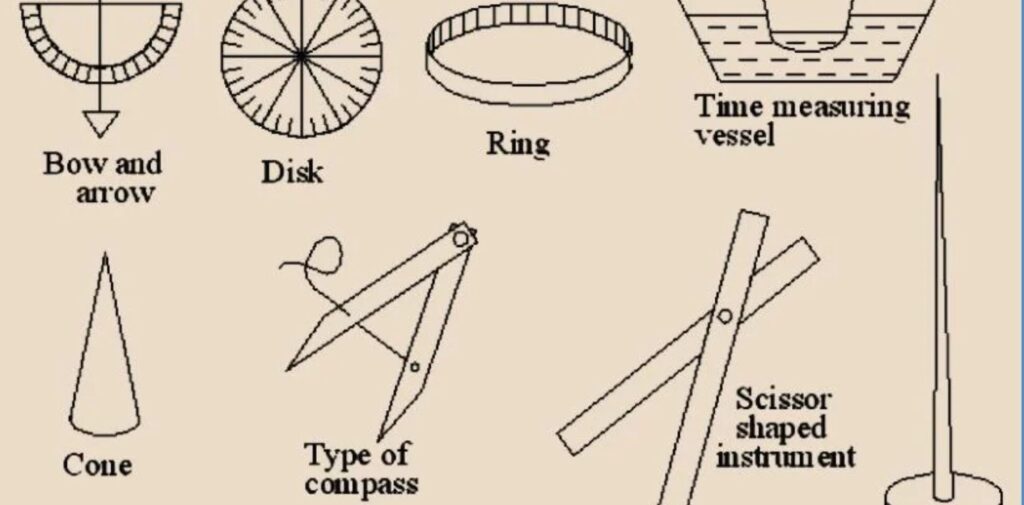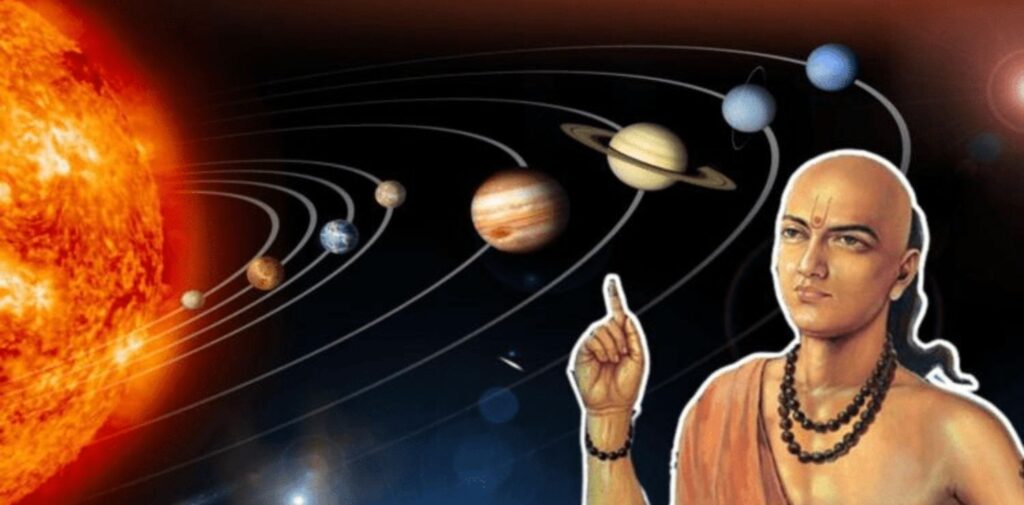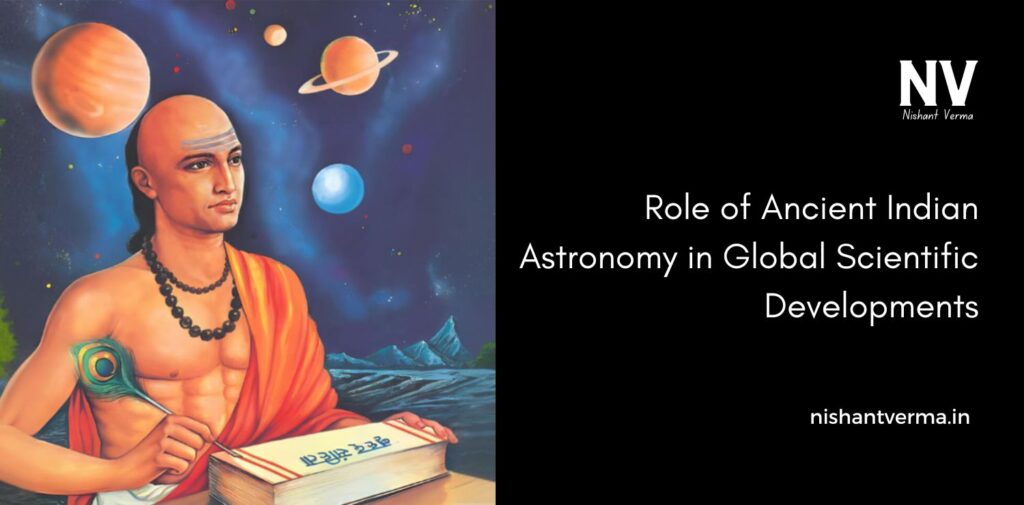Long before we had modern telescopes, space missions, and astronauts, ancient Indian scientists were making incredible discoveries about the stars, planets, and the universe. Their work in astronomy laid the foundation for many important ideas that we still use today in science. This article will explore how ancient Indian astronomy contributed to the development of science, not just in India but around the world.
What is Astronomy?
Astronomy is the study of the stars, planets, and everything in space. It is one of the oldest sciences and helps us understand how the universe works. In ancient times, people would look up at the sky and try to understand the movements of the stars, the moon, and the sun. Ancient Indian scientists were some of the earliest people to carefully study the sky and make discoveries about how everything in space works.

Early Beginnings of Indian Astronomy
Indian astronomy can be traced back over 2,000 years ago. Ancient Indian scholars were fascinated by the night sky. They carefully observed the movements of planets, stars, and the moon, and they used this information to create calendars, measure time, and make predictions about the seasons.
The oldest known Indian texts that describe astronomy are the Vedas, which were written around 1500 BCE. These texts contain descriptions of celestial bodies and their movements. The Rigveda, one of the Vedas, has many verses that talk about the sun, the moon, and the stars, showing that even in ancient times, the people of India were interested in understanding the universe.
Indian Astronomers and Their Discoveries
In ancient India, many brilliant astronomers made important discoveries that helped shape the field of astronomy. Some of these scientists even influenced the work of astronomers in other parts of the world.
One of the most famous ancient Indian astronomers was Aryabhata. He lived around 500 CE and is considered one of the greatest scientists of ancient India. Aryabhata made several important contributions to astronomy:
- The Earth is Round: Aryabhata was one of the first to suggest that the Earth is round and that it spins on its axis. At that time, many people believed that the Earth was flat. Aryabhata’s idea was a major breakthrough in understanding the Earth’s shape and movement.
- The Earth Spins on Its Axis: Aryabhata also correctly explained that the Earth spins on its axis, which causes day and night. This was a revolutionary idea that took many centuries to be accepted by people around the world.
- The Moon and the Planets: Aryabhata also understood that the moon and planets shine because of the sunlight that they reflect. He explained that the phases of the moon happen because of the way the moon orbits the Earth.
- The Calculation of Time: Aryabhata created an accurate way to calculate time. He introduced the concept of a “day” and described the movement of the stars and planets in the sky. He also calculated the length of the year as 365.358 days, which is very close to the actual length of the year we use today.
Another important figure in ancient Indian astronomy was Brahmagupta. He lived around 600 CE and made many contributions to mathematics and astronomy:
- Understanding of Gravity: Brahmagupta was one of the first to explain that objects fall to the ground because of an invisible force. This is the early idea of gravity, which was later explained in more detail by scientists like Isaac Newton.
- The Earth’s Motion: Brahmagupta also supported the idea that the Earth rotates on its axis. He believed that the Earth’s rotation was responsible for day and night.
- The Solar and Lunar Eclipses: Brahmagupta explained that solar and lunar eclipses happen because the moon moves in front of the sun or the Earth, blocking the light. This was a major advancement in understanding how eclipses work.

Indian Astronomical Instruments
Ancient Indian scientists did not have modern telescopes, but they created many clever tools to study the sky. One of these tools was the Jantar Mantar, which is a collection of large instruments built in the 18th century in India by the ruler Maharaja Jai Singh II. The instruments at Jantar Mantar allowed astronomers to measure the positions of stars and planets accurately.
Even before the Jantar Mantar, ancient Indian astronomers had already created simple tools to observe the stars. They used tools like gnomons (which were like giant sticks placed upright in the ground to measure the movement of the sun) and astrolabes (which helped measure the position of stars and planets).
Influence of Indian Astronomy on the World
Ancient Indian astronomy did not remain confined to India. The knowledge of Indian astronomers traveled to other parts of the world, especially through trade and cultural exchange. One of the main ways this happened was through the translation of Indian texts into other languages.
Indian astronomy influenced scientists in the Middle East, Central Asia, and Europe. For example, the Arab scholars in the 9th and 10th centuries translated Indian works into Arabic. These works were then passed on to European scientists during the Middle Ages. This exchange of knowledge helped shape the development of modern astronomy.
The works of Aryabhata and Brahmagupta were especially influential. Arab scholars used these texts to improve their own understanding of astronomy, which in turn influenced European thinkers like Copernicus and Galileo. In fact, many of the ideas that later became famous in Western astronomy, such as the idea that the Earth rotates and the moon reflects the sun’s light, can be traced back to ancient Indian scientists.
Indian Calendar Systems and Timekeeping
One of the major contributions of Indian astronomy was the development of accurate calendars. Ancient Indian astronomers created different systems to measure time, such as the solar calendar and the lunar calendar. These calendars helped people track the changing seasons, plant crops, and celebrate religious festivals.
The Hindu calendar is still in use today in many parts of India. It is based on the positions of the sun and the moon, and it is used to mark important events like festivals, holidays, and religious ceremonies.

The Legacy of Ancient Indian Astronomy
The work of ancient Indian astronomers is still remembered and respected today. Many of their discoveries, ideas, and inventions laid the groundwork for the scientific developments that followed. From Aryabhata’s understanding of the Earth’s rotation to Brahmagupta’s early ideas about gravity, ancient Indian astronomy shaped the way we look at the universe.
Today, many people around the world study astronomy, using advanced tools like telescopes, spacecraft, and computers. But the ancient Indian astronomers were some of the first to explore the mysteries of the stars, and their discoveries continue to inspire scientists and thinkers.
Conclusion – Ancient Indian Astronomy
Ancient Indian astronomy made a huge impact on the world. The ideas and discoveries of Indian astronomers like Aryabhata and Brahmagupta helped shape our understanding of the universe. Even though they lived thousands of years ago, their work is still important today. By studying the stars, the planets, and the movements of celestial bodies, ancient Indian scientists helped lay the foundation for modern science. Their legacy lives on in the world of astronomy, and their contributions continue to inspire scientists all over the globe.




